How to Have People-Friendly Goats
This helpful guide will give you tips on how to raise people-friendly goats and what you can do to train your goats so you can raise them more easily into a healthy and happy herd. Having goats that are gentle to you and others will help make your homesteading experience more positive.
Use these tips to help you set up a herd of goats that are fun to be around. When learning how to raise dairy goats, being friendly goes a long way to a healthy and happy herd.
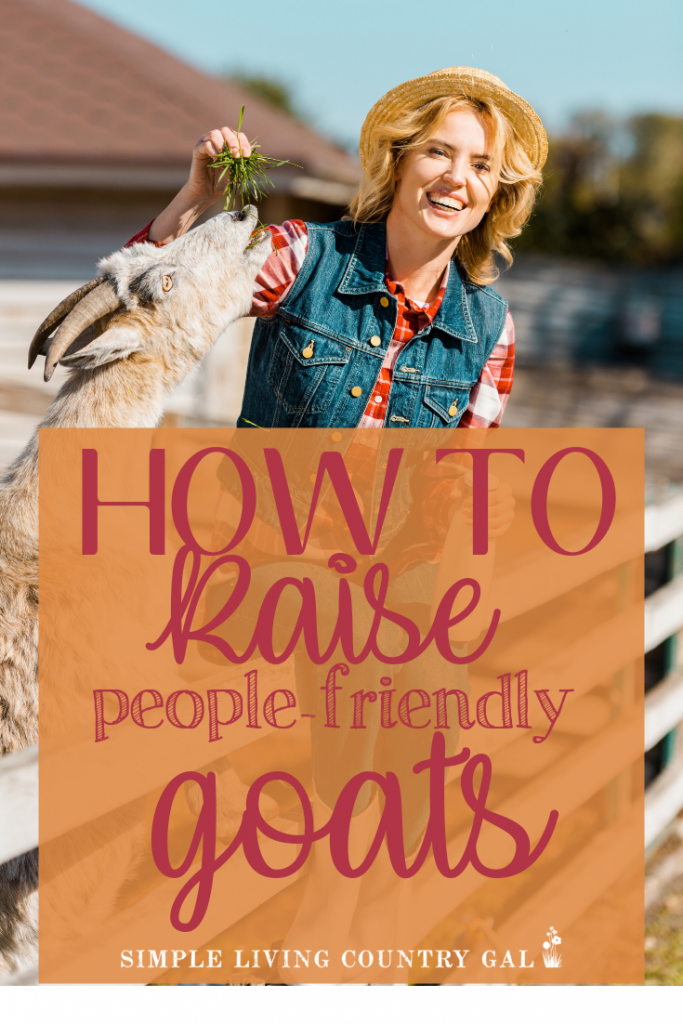
I get asked all the time, are goats friendly? And in most cases, the answer is yes. But as with all living things, there isn’t going to be a one size fits all kind of answer, and nowhere is this truer than with goats.
Have you ever gone to a farm and been magically greeted by animals?
Cows, chickens, horses, sheep, and goats all come running to say hello. I love to see animals that are used to people. I love even more seeing animals that are people-friendly.
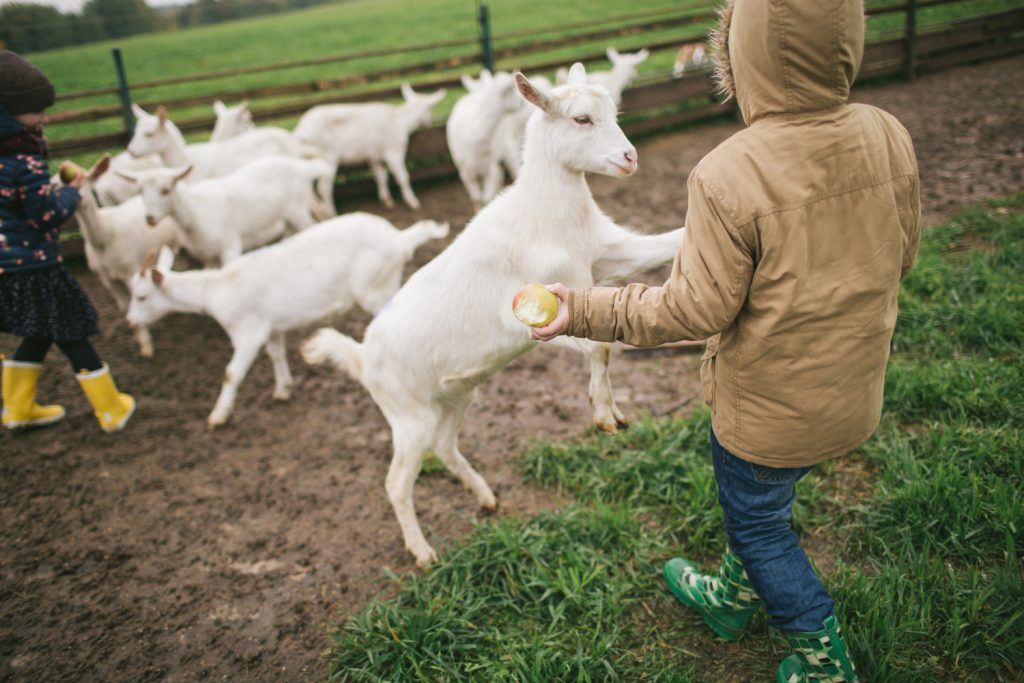
Most non-homesteading folks think all animals raised by people naturally love us, but unfortunately, that is not the case.
Some animals are just born skittish, requiring patience and extra care. My goal is to give you tips that will help you to raise people-friendly goats that you and your family will love to be around.
How to Have People-Friendly Goats on Your Homestead
Many of these tips are ones I have tried myself. You do not need to do them all; however, choose the ones that you feel will work best for you and give them a try. Animals are funny, and what works perfectly on one goat kid doesn’t even come close to working on the next.
Be sure to grab the FREE Friendly Goats Checklist below!
Tip #1. Bottle feed
It’s true if you bottle-feed your goat babies, they will LOVE you, almost to the point of too much. If you are the bottle holder, your goat kids will always see you as their feeder, AKA mom, and trust you almost completely.
For me, however, this option is only used if absolutely required.
Even though bottle-fed goats are people-friendly, I still prefer to have my moms feed their kids. I feel it creates a better herd atmosphere when the kids are dam-raised. Now, this does not mean that I will never bottle-feed. In some cases, it is required.
For example, if a mom has multiples and can’t produce enough milk, I will jump in and bottle-feed the weakest kid. This will ensure they grow up as healthy and strong as the rest.
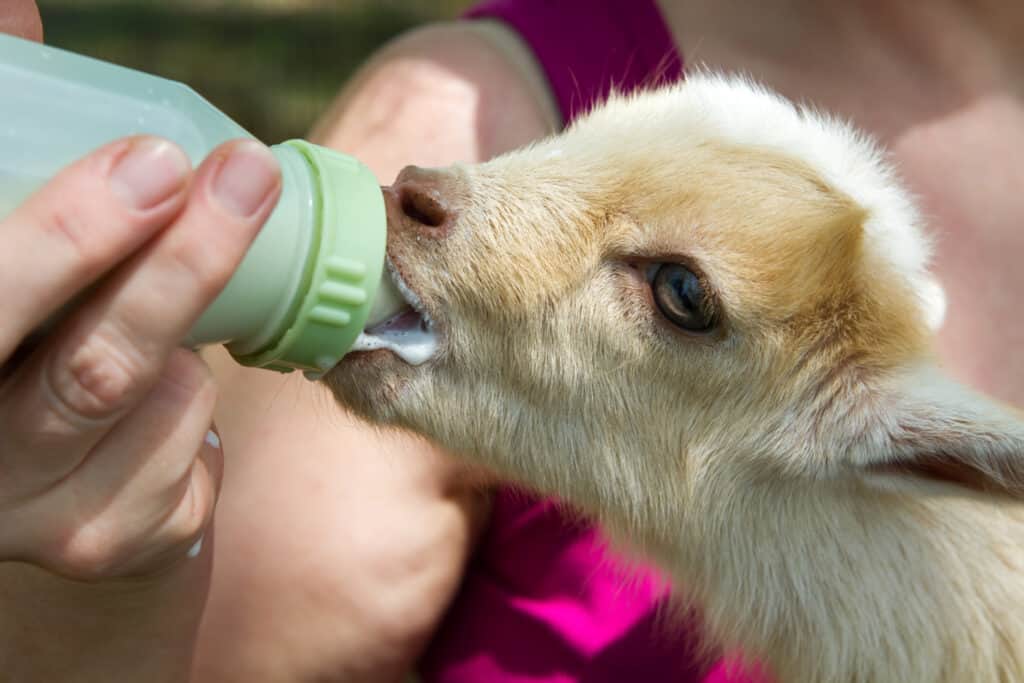
Another scenario that may require human intervention is if a mom doesn’t bag up, meaning her udder does not fill with milk upon or directly after delivery. This is a rare occurrence but something that can happen.
Or if, unfortunately, the mother does not recover after delivery and you need to step in.
All of these are uncommon occurrences but still, something to be prepared for, specifically at the time of kidding. I like to have supplies on hand for just about any issue that might come up, so I am not stressed trying to find what I need during a chaotic goat kidding.
I do this by stocking a kit I will keep in the barn during kidding season. You can read HOW TO SET UP A BIRTHING KIT so you too can have this helpful resource ready.
Please know that if you choose to bottle-feed, it will be a commitment from day one. Just like with a newborn baby, goat kids need to eat small amounts frequently throughout the day. For the first month, you will be bottle-feeding your kids four times a day, decreasing to weaning at the age of 6-8 weeks.
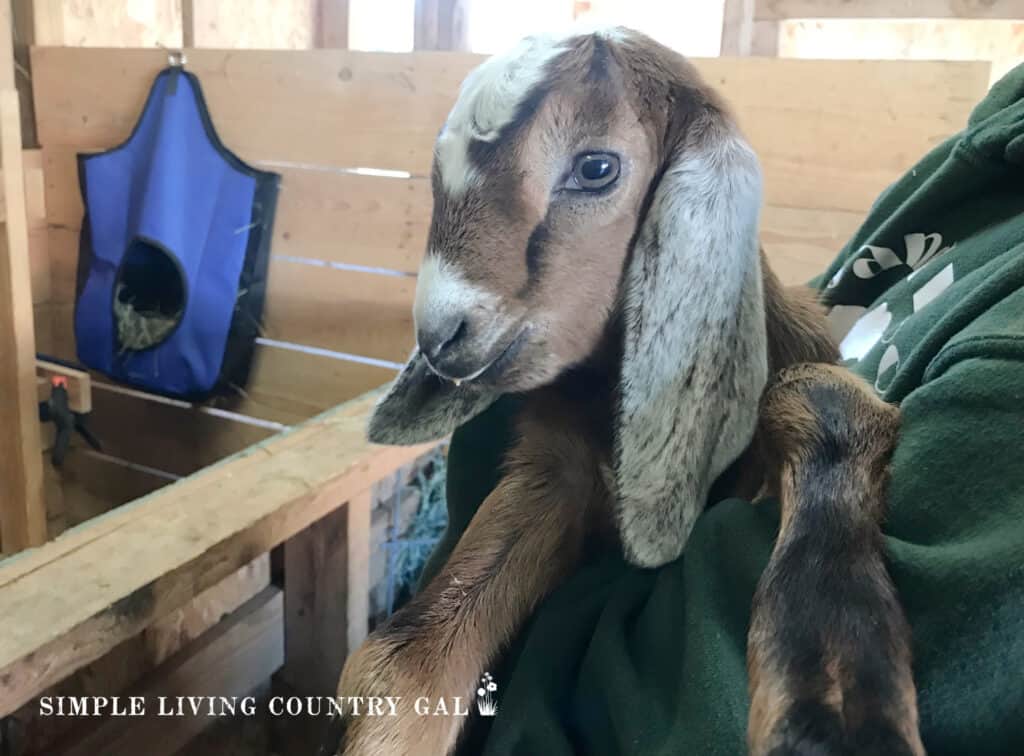
You can see our Baby Goat Feeding Schedule here to better understand the time commitment involved.
Bottle feeding multiple times throughout the day can turn your schedule upside down if you are unprepared for it. Just keep this in mind before you decide whether or not to bottle feed.
Tip #2. Be Hands-on From Day One
If you want people-friendly goats, then the minute they arrive on your homestead, try to be very involved with your animals. Touch them, talk to them, approach them. Do this in a natural non-threatening way using a calm voice. You don’t want to coddle them so much as to get them used to you being around.
Over the years I have found that moving slowly works best with most livestock. Just take your time, and hopefully, your patience will be rewarded.
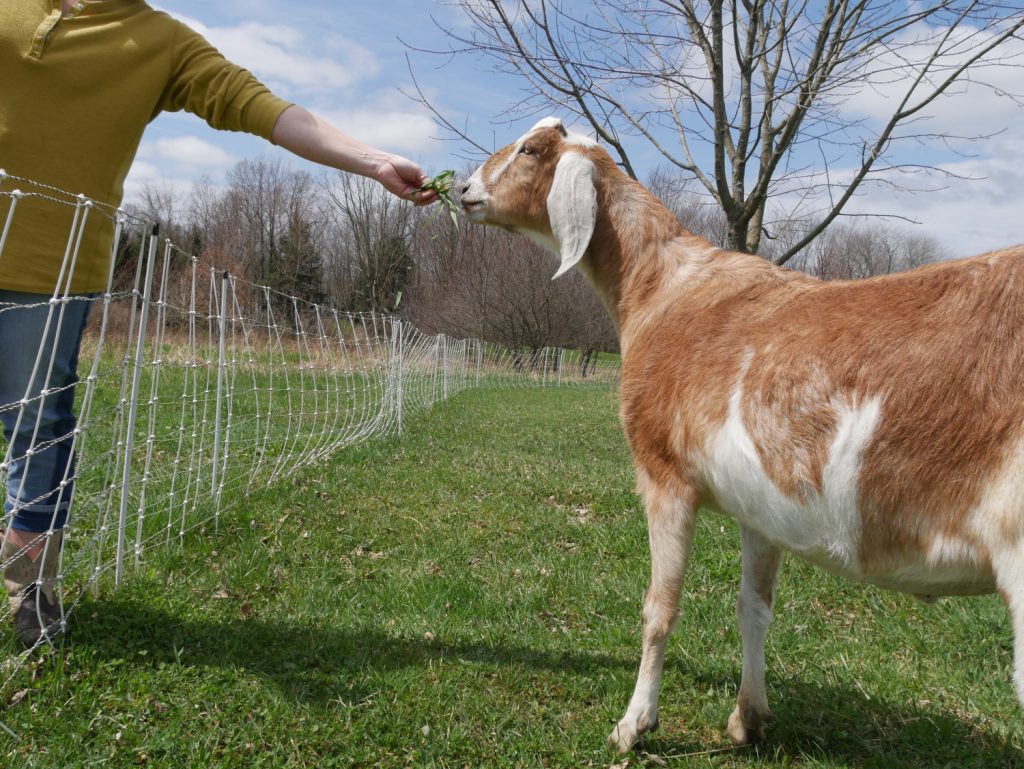
If you have kept your distance with your goats use this tip to get them acclimated to you being in closer contact with them.
Touch your goats every time you feed them.
Many times goats will eat hay or feed without paying too much attention to what is happening around them. As they eat, slowly and gently stroke their backs as if you are petting them.
If they allow you to do that, you can move on by touching their heads, rubbing their ears (many goats love this), or scratching their chest.
The more you can make this a part of your daily goat care routine, the more they will become accustomed to your touch and presence in the herd. Remember, always go slowly and watch your goat’s stance for cues.
Primal Freeze Dried Chicken Cat Treats, Made with Goat Milk The Goat Treats for Cats, 2 oz



Tip #3. Patience Patience Patience
I cannot stress enough the importance of being patient. Lose your temper one time, and you might be in for a setback. When things get stressful, take a deep breath and remember what your goal is. To help your goats learn to behave in a calm and friendly way around people.
Stop, take a deep breath, and begin again. If that doesn’t help, walk away. Come back when you are in a better state of mind.
This next tip goes without saying. Never ever hit your goats. One smack on the nose can undo any progress you have made until that point. When your fuse gets short, walk away.
Our goal is to develop unconditional trust; to do that, you need to be calm, patient, and gentle but firm.
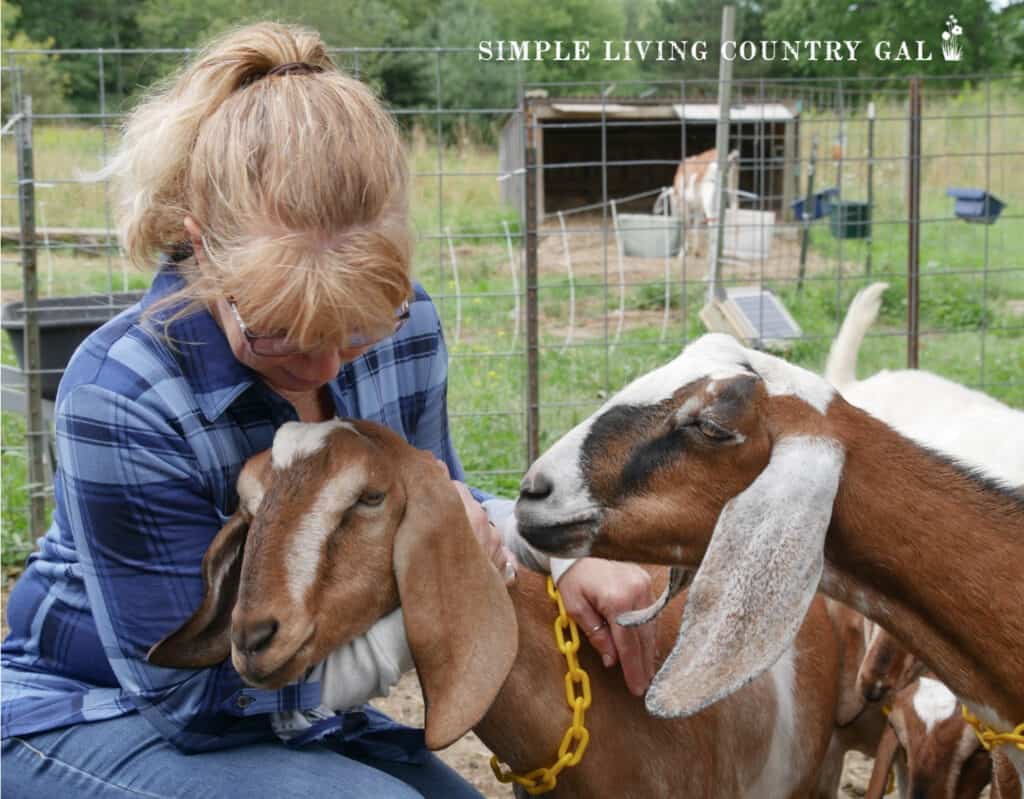
Tip #4. Socialize Early
On our homestead, we like to have routine playtime with our goat kids after just a few days. Goats grow quickly, both physically and mentally and it is quite amazing to see.
Just a few minutes after they are born, they are up and nursing, and for some, within hours, they are even trying to jump.
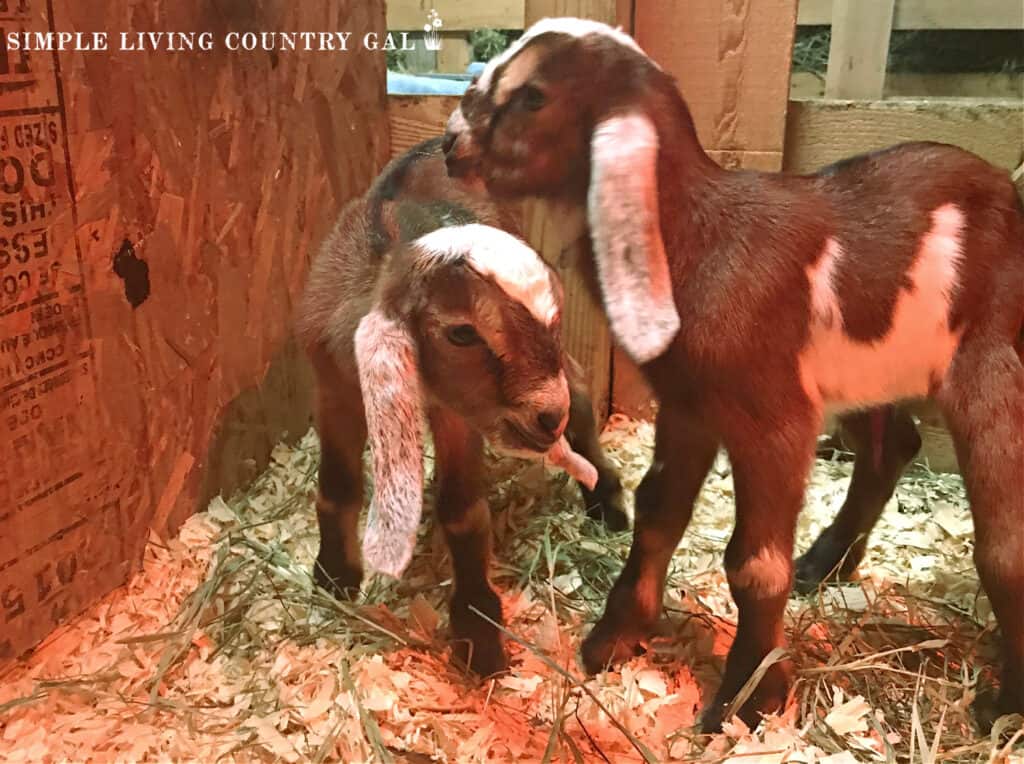
If you separate your moms into private birthing pens for kidding, you can let everyone out to stretch their legs a few times each day. Our barn has a small center aisle that is perfect for the kids to get out and play with the risk of accidental injury from other adults in the herd.
This allows the kids to explore at their own pace and become accustomed to someone other than their siblings and gives the new moms a much-needed break.
Tip #5. Tether Feed
This is something we prefer to do on our homestead but is not required to have people-friendly goats. We find it easier to custom-set a diet specific to each goat allowing us to manage issues that may come up or offer support by mixing in vitamins or herbs for specific goats that need it.
Tethered feeding also teaches goats that certain rules must be followed. By teaching your goats to eat this way, you are setting a routine for them and you as well.
What is tethered feeding?
Tethered feeding is when you put your goats on a short lead next to their feed area. This way, they can only get access to the food directly in front of them and, in turn, reduce the risk of weaker goats getting bullied out of their food.
READ: HOW TO TRAIN YOUR GOATS TO TETHER FEED
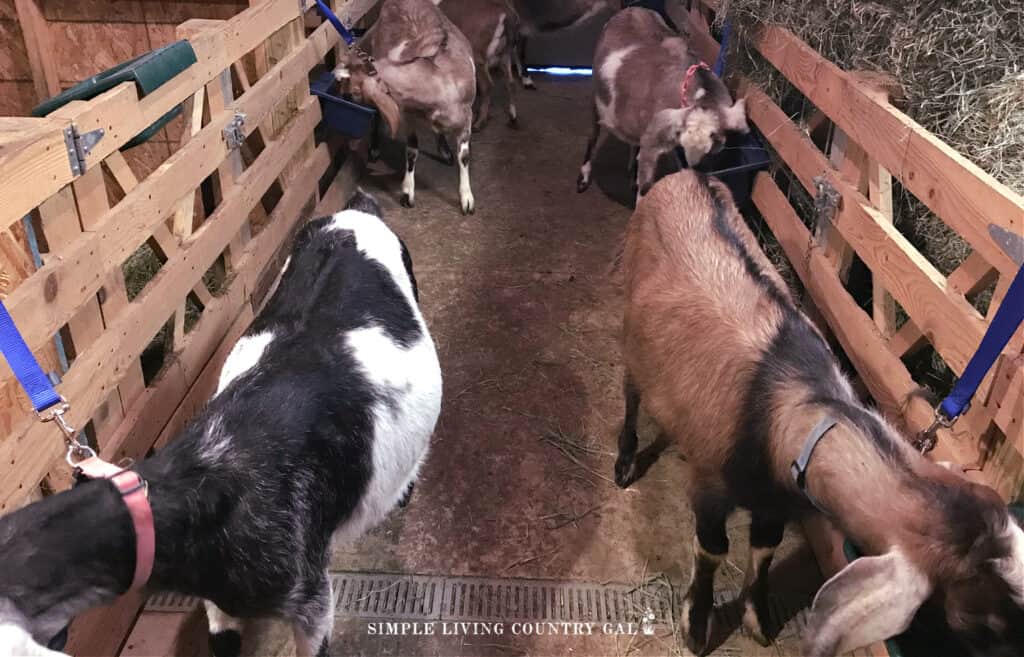
Tip #6. Train your Goats to Come when Called
This is something I not only do with my goats but with all of our animals. I have a specific call for my goats that they know it is time to return to the barn. This is very helpful when they are out in the pasture which can be quite far away. Just one yell, and they come running.
I use this call to bring them in to feed, to meet any visitors we might have, to get them out of the weather, or to close them up for the night.
You can see it in action here.
Training your animals to come when called is very helpful, especially in an emergency.
Tip #7. Know their Favorite Treat
This is not something I do for socializing, but it can be helpful in a pinch if you need your goat to listen.
I have said before how finicky goats can be, and this is true with treats as well. For example, some of my goats LOVE bananas and banana peels, whereas others won’t go near them. Know your goats and what they like, and you can help lure them to you and begin to build that trust bond.
How it works with a skittish goat.
- Every time you approach a standoffish goat, offer them their favorite treat.
- Repeat this routine a few times each day.
- Give only one treat each training session as they learn you are a friend and not a foe.
- This will help them learn your disposition and your smell each time you are near.
- Add in your voice and touch as things progress. Talk to them in a calm voice and use a gentle hand to pet them.
All of these steps help your goats to become familiar with you, and as they do, they will begin to acclimate to your presence in the barn.
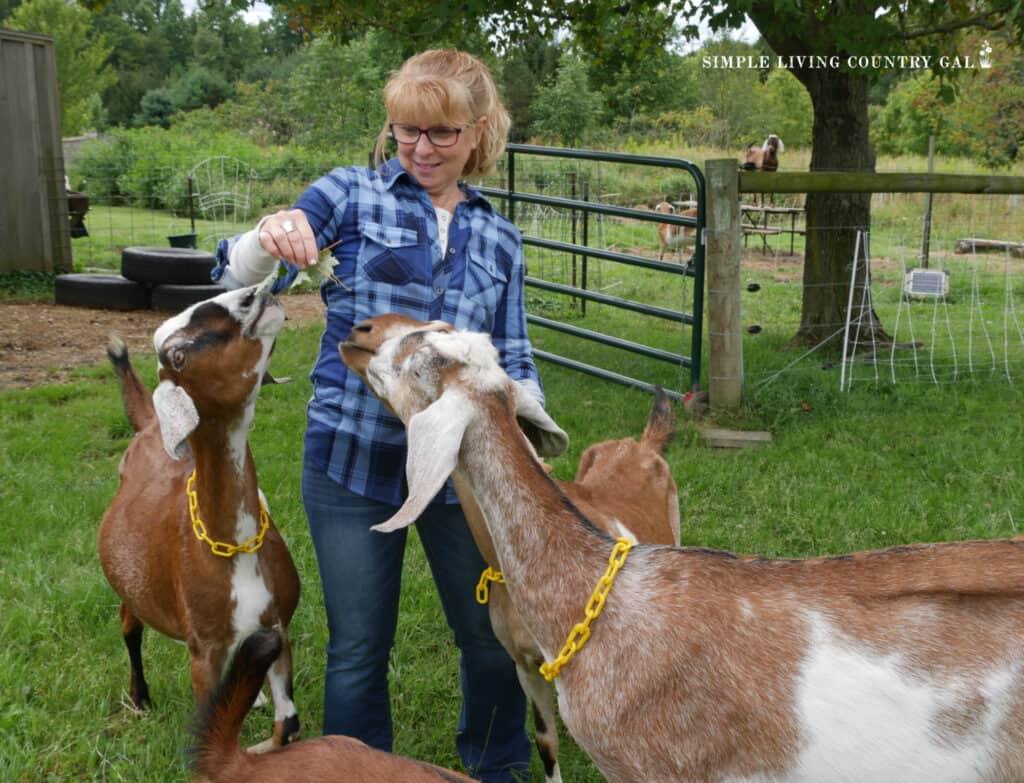
What if you have tried everything and your goat is still not people-friendly?
Yes, there may be times when a goat will simply not come near you no matter what you have tried to make them feel safe and comfortable. This could be how they were raised in their previous home or a disposition they were born with.
If you have a goat that will not come near or is aggressive in any way, you will need to ask yourself the hard questions.
I am not one to quickly sell my goats. I will work hard to help them adjust to the herd and our family. But there have been a few cases when we had a goat that was extremely skittish to the point of causing injury.
Let’s cover a few scenarios that may come up.
Does this goat’s nature make it difficult to treat her for any medical issues?
Nothing is worse than a medical emergency and a goat who is terrified of people. Have you ever tried to get a skittish goat in a truck bed to rush them to the vet? It’s not easy; trust me on this.
Trained, people-friendly goats will make a stressful situation easier to deal with.
Does this goat threaten to hurt you or others?
This is especially important if your goats are around young and inexperienced children. This is also true if you are older. A scared goat can do damage to their surroundings. A scared goat also runs the risk of injuring themselves, other members of the herd, and even you.
I found this out firsthand. No, my goat was not trying to hurt me, but I injured my back and arm in a situation that could have been much worse. I learned a valuable lesson that day and quickly got to work creating a safer environment for our entire herd.
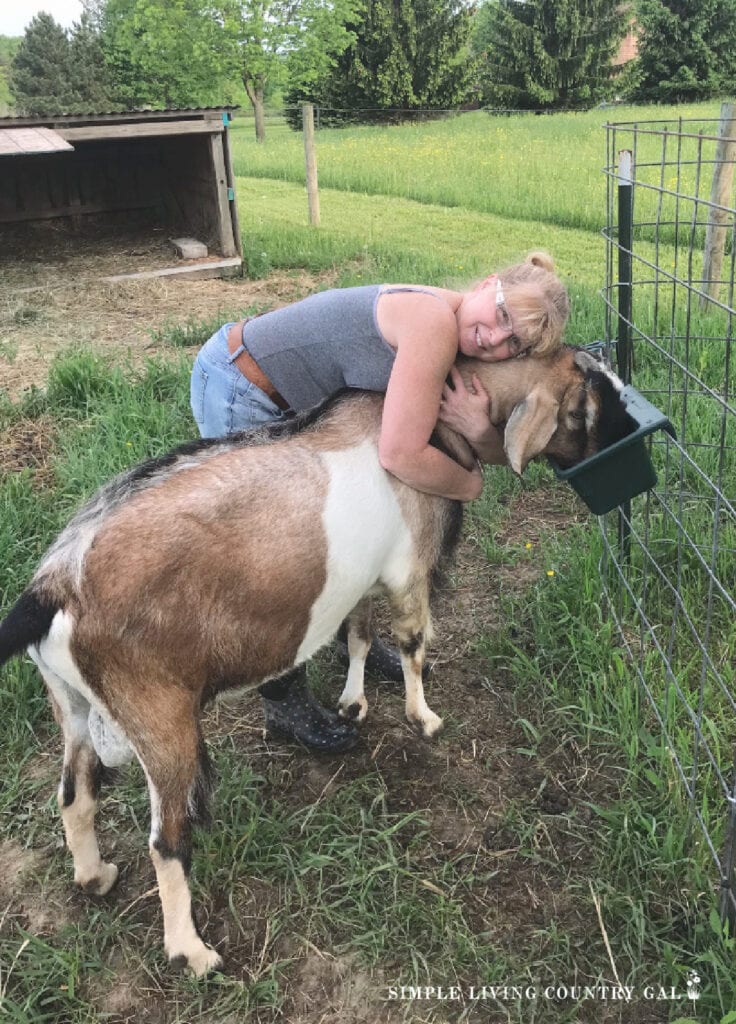
Does this goat make it stressful or dangerous to milk?
Milking should be an enjoyable time with your goat. A goat that acts out on the milk stand will quickly have you hating what you want to love.
To help, you will need to start working with your pregnant does getting them used to you touching their udder as well as the milk stand. This does take time but the results of a calmer goat on the stand is will worth the time investment now.
Get tips on how to milk a rowdy goat using goat hobbles.
Does this goat commonly try to inflict injury on people or other animals?
The pecking order in a goat herd is a natural part of goats; however, bullying is not. If you want people-friendly goats, it helps to have herd-friendly goats. Watch how your goats interact with each other for clues that they may be in a situation that needs to be dealt with.
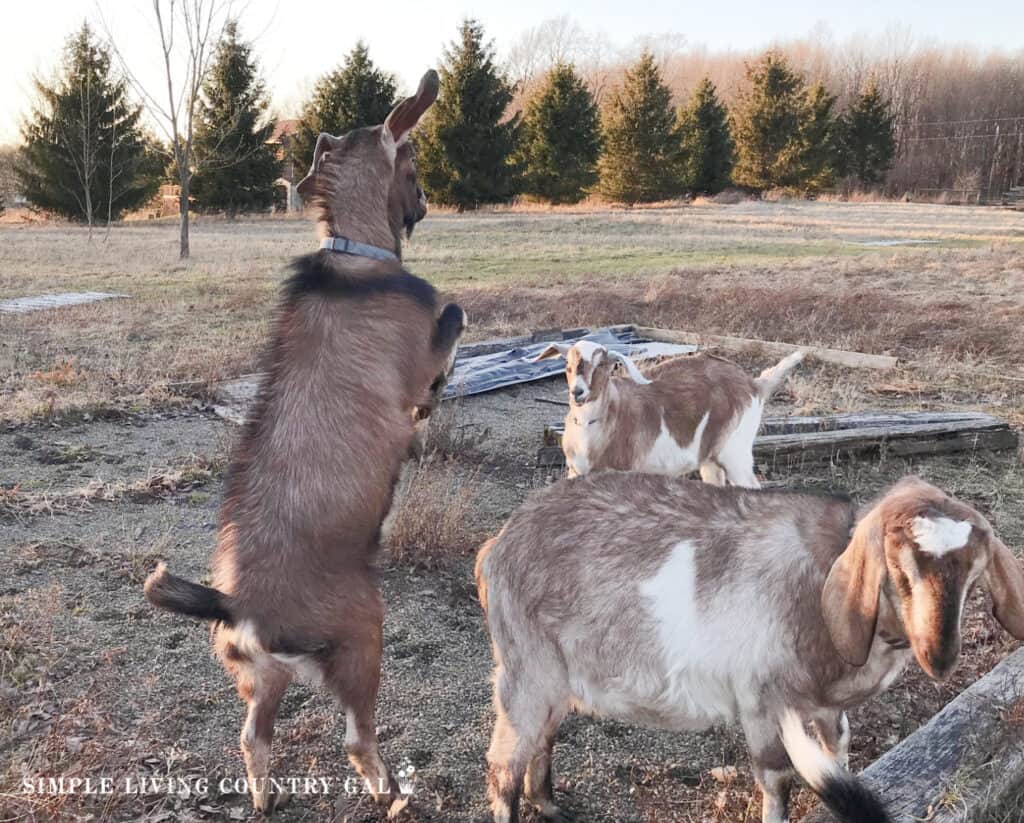
If you answer yes to most or all of these questions, you may need to take action.
Not all goats are a good fit for all homes, and just because you do not “click” with a goat does not mean that the goat will not “click” with the next owner. Do yourself and your goat a favor and offer them the very best home, even if that means it’s not with you.
Do you have people-friendly goats? Tell me about them in the comments below; I would love to meet them!






My foundation does, 2 sisters, were purchased from a farm that provided basic needs but nothing more. When I got them at 4 months old, the only human contact they had had their whole life was once a day she would go feed them. They were terrified when I got them home. I tried all those things, and then some. But nothing worked. Until I simply ignored them. Seriously. I’d take a book or magazine in the stall with me, sit down, and read for 15 minutes, then get up and leave. Goats are a curious lot. I decided to use that curiosity to my advantage. When I wasn’t following them around, they wondered why. And actually they came to ME!! After only a week, I was able to reach out and scratch Buttons neck and cheek for the first time.
So maybe add that to your list, too.
That is quite possibly the best tip on how to deal with skiddish goats! I will add this for sure, thank you for sharing!
Tracy Lynn